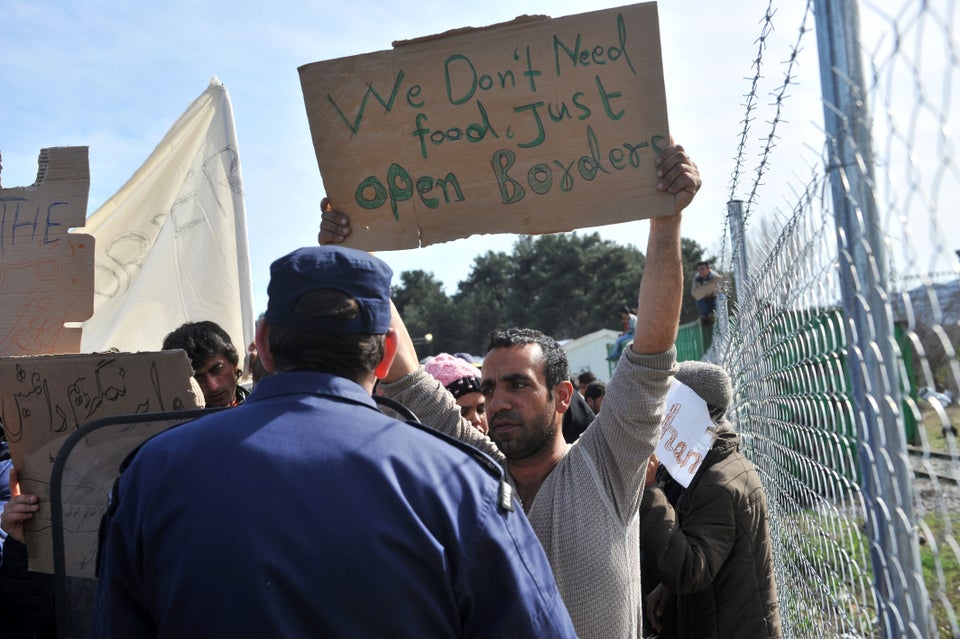At the center of Republican presidential nominee Donald Trump’s campaign is the proposal to build a “great, great wall” along the United States’ border with Mexico ― and to make Mexico pay for it.
And as Americans debate the legitimacy of this immigration policy, several European countries are working hard to build walls with the same purpose as the one Trump has suggested: keeping migrants and refugees out.
Border walls have been around for thousands of years ― think of the Great Wall of China, which was built to fend off invasions, or the Berlin Wall that divided East and West Germany until 1989. The irony is that much of the European Union has for years been defined by unrestricted movement between countries.
Until last year.
“In 2015, borders and walls seemed to burst onto the global agenda in the context of migration and halting spontaneous movement,” Reece Jones, associate professor of geography at the University of Hawaii at Manoa, wrote earlier this month for the Migration Policy Institute.
Some European countries within the free-movement Schengen zone are “reverting back to their enforcement of national borders,” Susan Fratzke, policy analyst at the MPI, told The Huffington Post.
Other countries are introducing border checks where they previously did not exist. Guards between countries like France and Belgium, for example, now check travelers’ documentation.
And some countries, like Hungary, have decided to build physical walls.
“Those barriers have been the most dramatic,” Fratzke added.
This is happening for several reasons.
It’s important to keep track of the high number of refugees and migrants arriving to some countries, Fratzke said. This became evident in many countries last year, when so many refugees applied for asylum that systems were completely backlogged.
On the other hand, she said, there are the countries where “border control has been a populist measure to try to respond to inflamed public reaction to people who are arriving.” Hungary, for instance, recently held a referendum in which 90 percent of voters chose to reject EU-mandated refugee resettlement quotas (that decision is moot, however, because less than half of the total population voted).
“People still try to cross the border. They just do in a different place or through a different method.”
- Reece Jones, associate professor of geography at the University of Hawaii at Manoa
Experts agree that physically blocking people from entering the country is not an effective way to prevent migration.
“People still try to cross the border,” Jones told HuffPost. “They just do in a different place or through a different method.”
Border walls might slightly deter refugees in places like Greece, Fratzke added, “but if you look at the central Mediterranean [between Libya and Italy], there’s been an increase in flows and we actually saw more deaths.”
Check out what the new, fortified Europe looks like:
France
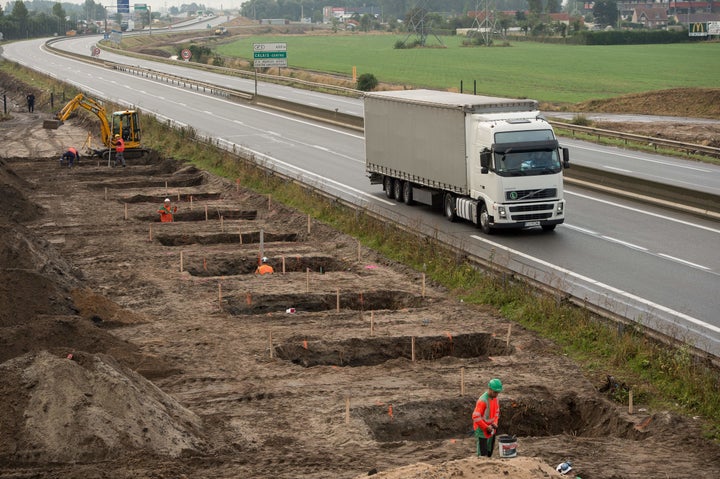
British officials announced last month that they would finance the construction of a wall to keep out the migrants and refugees living in the “Jungle,” a camp in Calais, France, where about 7,000 people live.
The steel structure, already nicknamed the “Great Wall of Calais,” is expected to be 13 feet high.
Although less than a mile long, the “get out” symbolism that the wall creates is unmistakable. The U.K. border actually extends into Calais, meaning that the Brits are literally stretching across the English Channel and putting up additional fortifications to prevent migrants and refugees from reaching their shores.
Many of the people living in Calais and Grande-Synthe, a nearby refugee camp also housing thousands, had attempted to leave France by jumping onto moving trucks bound for the English Channel.
Turkey-Syria
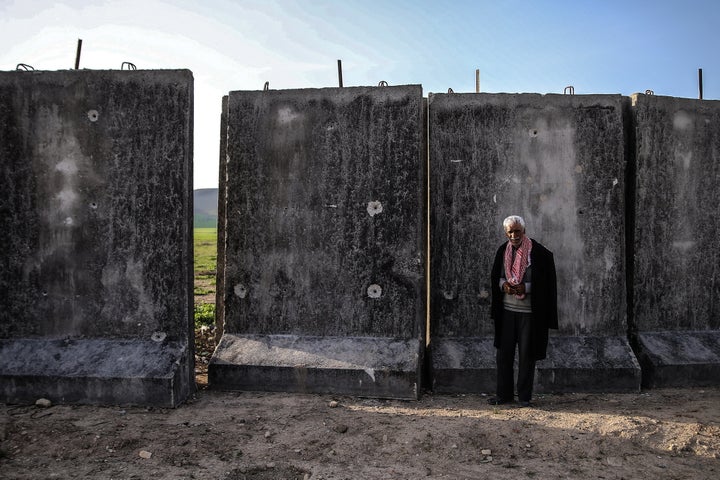
Turkey, too, has started building a concrete wall along its entire border with Syria ― that’s a 560-mile wall ― to try to stem the flow of refugees pouring in from the war-torn country. Officially, the Turkish government claims to welcome Syrians with open arms.
Once completed, the wall is expected to stand 10 feet high tall and almost 7 feet wide. Construction is projected to be completed by February, Reuters reported.
Almost 3 million Syrian refugees currently live in Turkey, according to the U.N. Refugee Agency.
Norway-Russia

Norway announced in August that it would begin constructing a wall ― 660 feet long and 11 feet high ― on its Arctic border with Russia.
Once walls in the Balkans started going up, migrants and refugees were required to find new routes westward. Some traveled north all the way through Russia and into Norway, prompting a crackdown in a country once known as a haven for migrants.
A total of 31,145 people applied for asylum in Norway last year, according to the country’s Directorate of Immigration statistics ― almost 20,000 more than the year before.
The country already unsuccessfully tried sending people riding bicycles from Russia back across the border.
Hungary-Serbia
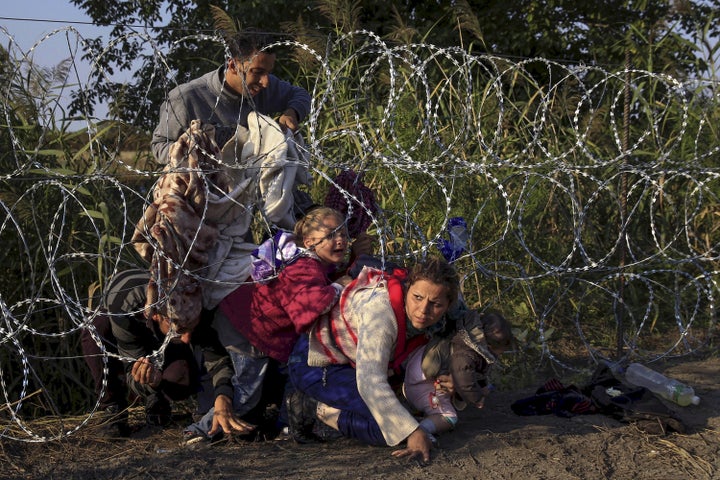
Hungary has been one of the fiercest anti-refugee campaigners since the crisis came to a head last year, and Prime Minister Victor Orbán has announced a second barbed-wire fence to stem the flow of people into the country.
The first, which is 310 miles long, was built in the fall of 2015.
Some 4,992 migrants and refugees were stranded along the border with Serbia as of Oct. 5, according to the International Organization for Migration. This represents a 348 percent increase since early July, when Hungary passed a law allowing some people to be sent back to Serbia.
Orbán also eferred to migration as “poison” over the summer.
Some migrants and refugees have been severely abused along the border, Human Rights Watch reports.
Austria-Hungary

Austria finalized plans in July to erect a barrier along its entire border with Hungary. For many, Austria represented the final frontier on a journey from Greece to Germany or Sweden.
The number of migrants entering Germany from Austria had fallen more than sevenfold between November 2015 and March 2016, according to Reuters.
Slovenia-Croatia
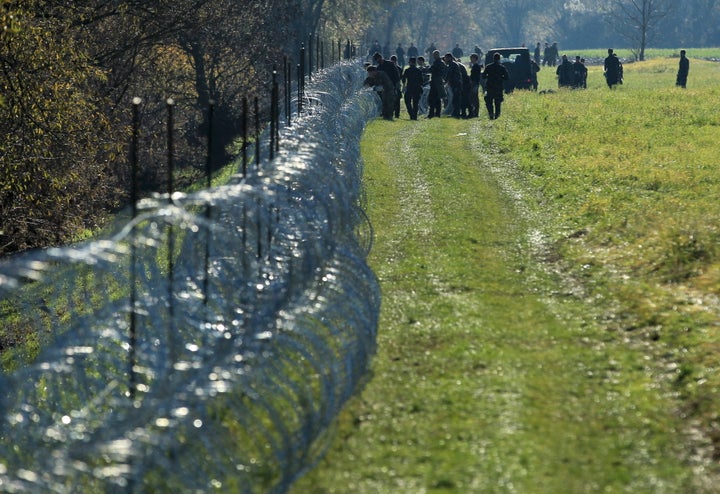
Slovenia constructed a 78-mile fence last year along part of its border with Croatia to try to close off a portion of the so-called Balkan migration route.
Macedonia-Greece

There are currently about 60,000 refugees languishing in Greece, per the latest U.N. Human Rights Council data. A few hundred have been sent back to Turkey, and, as was outlined in a March deal between the EU and Turkey, 4,140 have been resettled in other European countries, according to the IOM said.
The fate of the rest remains murky, but what is abundantly clear is that they won’t be making it further into Europe since borders are all shut.
Bulgaria-Turkey
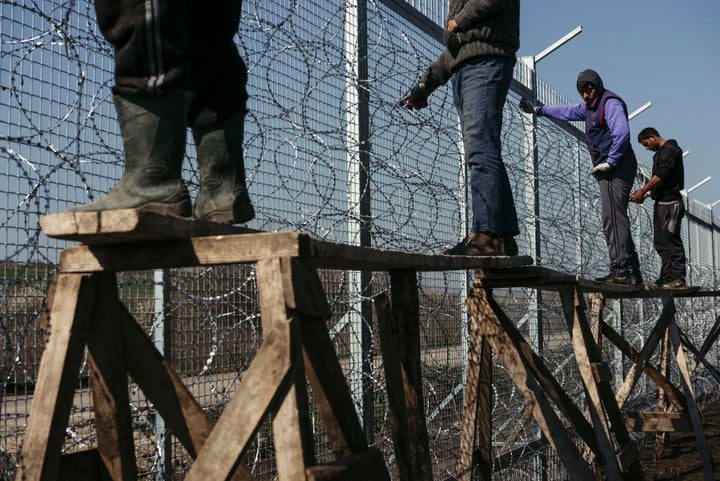
There’s a similar situation in Bulgaria. A fence went up last year to keep people from flowing in from Turkey and was extended this past summer.
It hasn’t managed to keep everyone out. The country recorded about a 717 percent increase in illegal arrivals, from 863 to 7,070, between March and September of this year, the IOM said.
What’s Left?
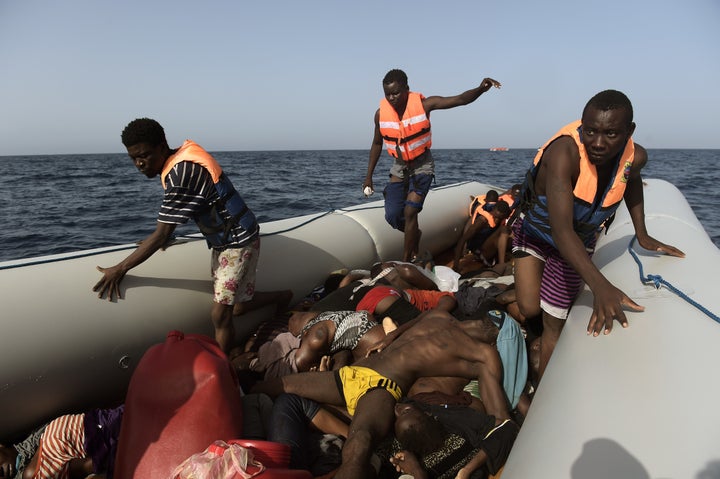
Any and all routes leading out of Greece have been cut off, pushing people toward the most dangerous voyage of them all: southern Italy via Libya.
The danger doesn’t seem to be deterring people. Search and rescue crews are busier than ever. More than 10,000 people were rescued in a 36-hour period recently.
Although arrivals across all of Europe are down compared to last year ― 316,331 migrants and refugees entered Europe by sea in 2016 through Oct. 9 compared to 520,000 in all of 2016 ― more have died, according to the IOM. And arrivals to Italy are up by 6 percent compared to last year.
“Rather than endangering migrant lives and filling the coffers of the smugglers, the EU should focus on increasing resettlement quotas and creating corridors that allow safe passage,” Jones, the geography professor, said. “If they don’t, we will continue to see more and more migrant deaths in the years to come.”


